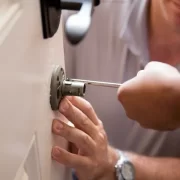Around the world, commercial, military and private aviation have one thing in common: foreign object debris – or FOD. According to the International Air Transport Association, in 2015 more than 3.5 billion people flew safely on 37.6 million flights, not including air cargo, private or military flights. Every flight has the potential to be impacted by FOD. FOD is real. FOD is dangerous. FOD is manageable.
What causes FOD?
FOD comes from many sources, which makes it difficult to maintain safe airfield operations 100 percent of the time. It can be generated by employees, airport infrastructure, the environment and support equipment or vehicles operating on the airfield. Military aircraft operating abroad may also face substandard facilities or other conditions beyond their control.
Types of FOD
FOD is anything on a runway, taxiway or flight line with the potential to be blown around by exhaust or ingested by engines. These are just a few examples:
- Nuts, bolts and washers
- Aircraft parts
- Tools
- Employee badges, pens and pencils
- Runway or taxiway materials
- Construction debris
- Plants or wildlife
With so many types of potential FOD, FOD control must be comprehensive and mandatory.
Costs of FOD
FOD repair costs can be significant. A FOD-damaged engine may easily exceed $1 million, or 20 percent of its original purchase price. Other indirect costs might include:
- Flight delays and cancellations, leading to a loss of customers
- Schedule disruptions caused by repositioning airplanes and crews
- Potential liability due to injury
- Additional work for airline staff
FOD control
At the Boeing Delivery Center in Everett, WA, airplane maintenance technicians walk their stall’s portion of the flight line at the start of each shift looking for FOD. Airlines do something similar. FOD control is a good safety and business practice and required by the Federal Aviation Administration in the United States and other similar regulatory agencies globally. Effective FOD control programs generally focus on four main areas: prevention, detection, removal and evaluation.
FOD removal
There are many types of equipment for FOD control and removal. However, one of the best and most cost-effective options is the FOD*BOSS. It collects debris using just the force of friction against the tarmac and a series of specially designed brushes that scoop up FOD and hold it in an easy to empty mesh capture zone. The FOD*BOSS collects all types of debris left behind by suction and vacuum sweepers, from large metallic objects to very fine sand.
With a sweep width of 8 feet, 16 feet or 24 feet, it can clean up to 3 million square feet per hour, at speeds from 4 to 25 mph. Its non-mechanical operation and ability to be towed by either battery or electric-powered vehicles means it is one of a kind in the airfield sweeping industry. The FOD*BOSS is now standard equipment at international airports, military bases and airstrips around the world.













Comments